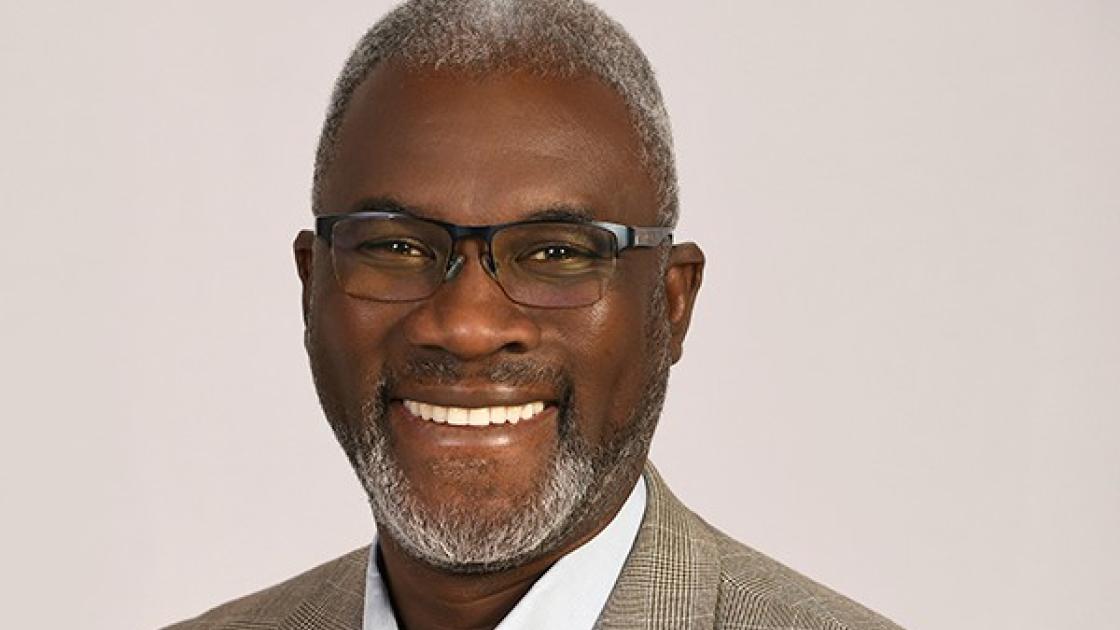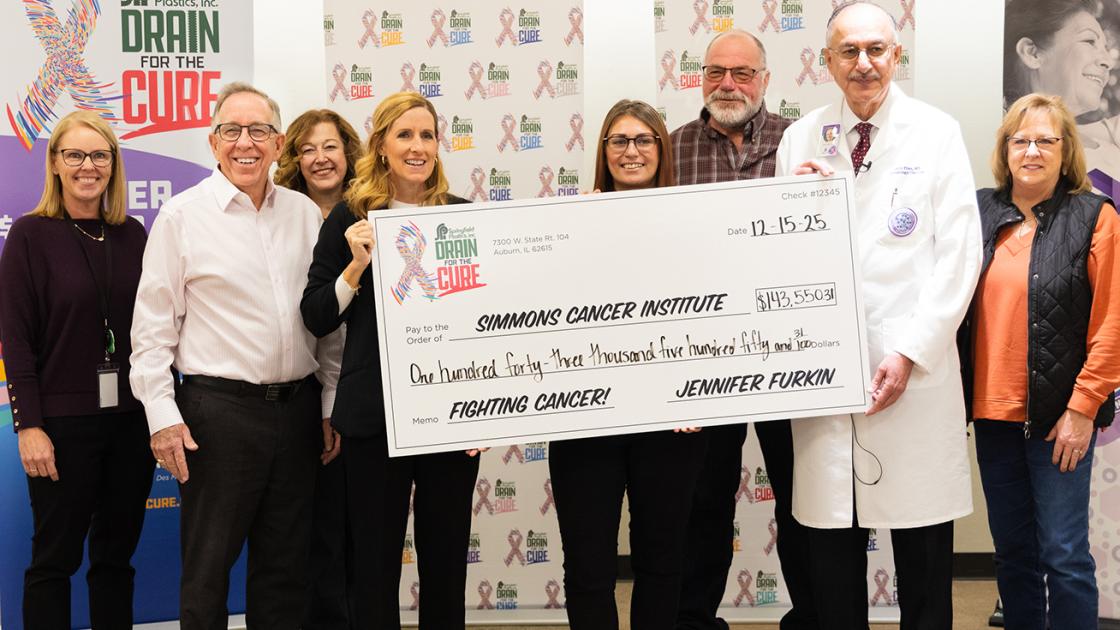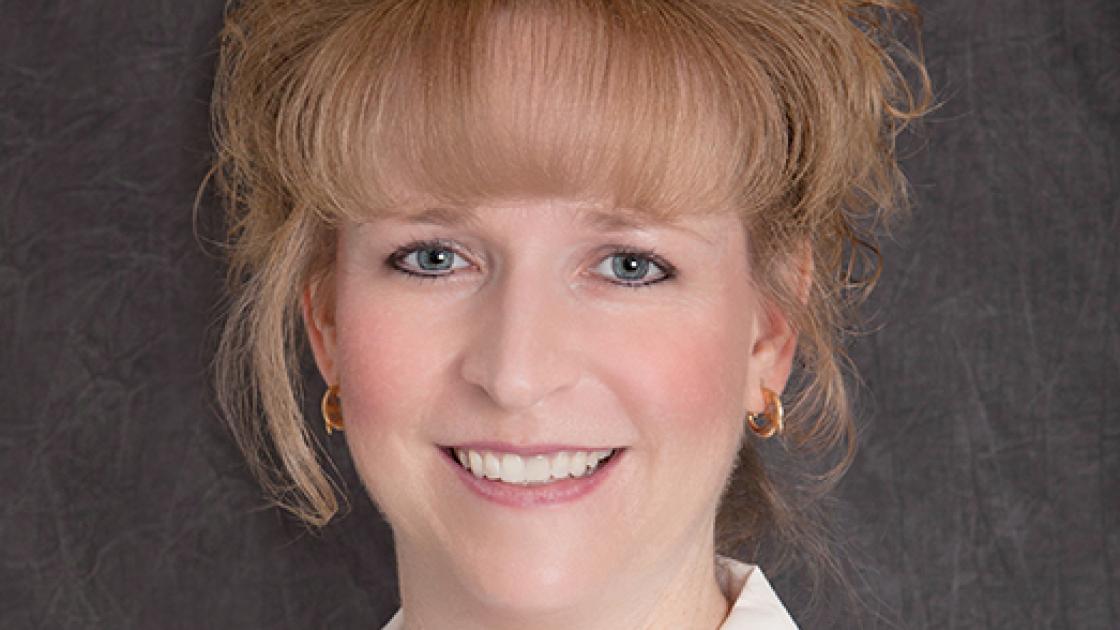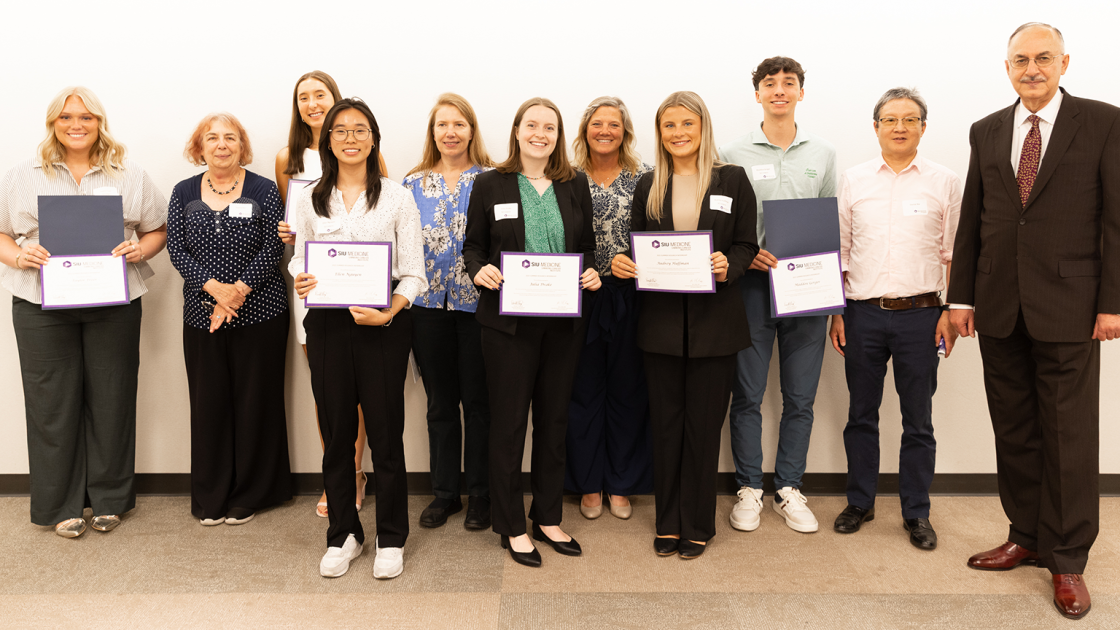
Local students explore cancer research in summer internship showcase
On a warm July evening, Simmons Cancer Institute at SIU Medicine welcomed a full house of families, mentors and supporters for its annual Summer Internship Presentation and Donor Appreciation Reception. Laughter and quiet pride echoed in the building’s atrium as the undergraduates took the podium one by one to present their cancer research projects, each created over an intense nine weeks of lab work in Springfield and Carbondale.
The six students, selected from a competitive pool of 25 applicants, brought with them curiosity, persistence and a desire to help others. They left with something more: firsthand research experience, professional mentorship, and a deeper understanding of the scientific process and its real-world impact on patients.
Simmons Cancer Institute Summer Internship Program, launched in 2009, is made possible by donor contributions to the Denim & Diamonds gala. Since its inception, it has supported 74 local students, most of whom have gone on to medical school, graduate programs or careers in health care and research.
“This program is about learning, mentorship and generosity,” said Aziz Khan, MD, executive director of Simmons Cancer Institute, as he welcomed the audience. “Our interns are the future of cancer care, and our donors are the reason they’re here.”
Building the puzzle, piece by piece
Setting the stage for the evening was Don Torry, PhD, SIU School of Medicine’s associate dean for research. He spoke of mentorship and the impact research has in generating not only treatments, but also hope for cancer patients and the people who love them.
“Each of us in research contributes a piece to the puzzle,” Torry said. “But for the whole picture to emerge, we rely on those we mentor — the next generation. Interns, we expect great things from you. And patients are counting on it.”
Throughout the summer, interns worked closely with faculty scientists, graduate students and clinical teams. Several explored questions rooted in the immune system’s role in cancer, while others studied tumor blood vessels, breast cancer drug resistance or the molecular signals behind childhood cancer.
But behind the data points and graphs were deeply personal motivations — from a Jacksonville student who found joy in extracting DNA, to a Carbondale native drawn to pediatric oncology research. Each project had its own story, grounded in a commitment to making tomorrow’s medicine better.
Mapping cancer’s molecular defenses
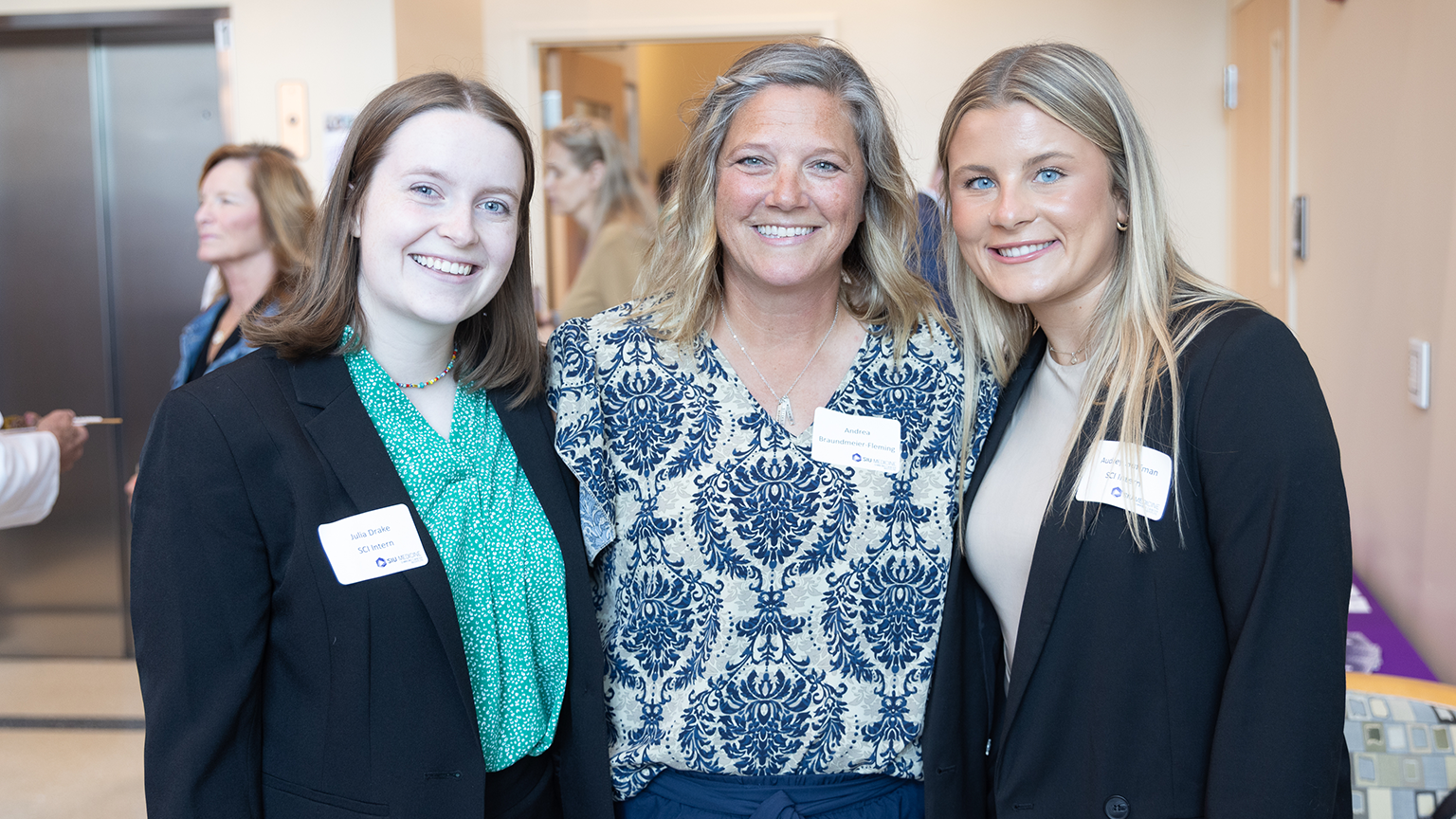 Two interns, Audrey Huffman, a native of Jacksonville, studying at Maryville University and Julia Drake from Pleasant Plains, attending the University of Illinois Urbana-Champaign, shared their work in Andrea Braundmeier-Fleming’s lab. Braundmeier-Fleming, PhD, is an associate professor in the Department of Medical Microbiology, Immunology and Cell Biology (MMICB), Department of Obstetrics and Gynecology and a Simmons Cancer Institute Faculty Member. Their project focused on immune regulation in endometrial cancer, a common gynecological cancer with high survival rates when detected early, and grim outcomes when caught late.
Two interns, Audrey Huffman, a native of Jacksonville, studying at Maryville University and Julia Drake from Pleasant Plains, attending the University of Illinois Urbana-Champaign, shared their work in Andrea Braundmeier-Fleming’s lab. Braundmeier-Fleming, PhD, is an associate professor in the Department of Medical Microbiology, Immunology and Cell Biology (MMICB), Department of Obstetrics and Gynecology and a Simmons Cancer Institute Faculty Member. Their project focused on immune regulation in endometrial cancer, a common gynecological cancer with high survival rates when detected early, and grim outcomes when caught late.
Audrey and Julia analyzed patient tissue samples to investigate how tryptophan, an amino acid, may be manipulated by tumors to suppress the immune response. Their findings could help explain why some cancers escape detection and resist immunotherapy. They also studied the gut and urogenital microbiome, exploring how changes in bacterial communities might drive inflammation and contribute to cancer progression.
“We're seeing a shift toward an inflammatory state,” said Julia, describing altered bacterial profiles in cancer patients. “This could eventually help identify at-risk patients sooner, in a less invasive way.”
Disrupting cancer’s blood supply
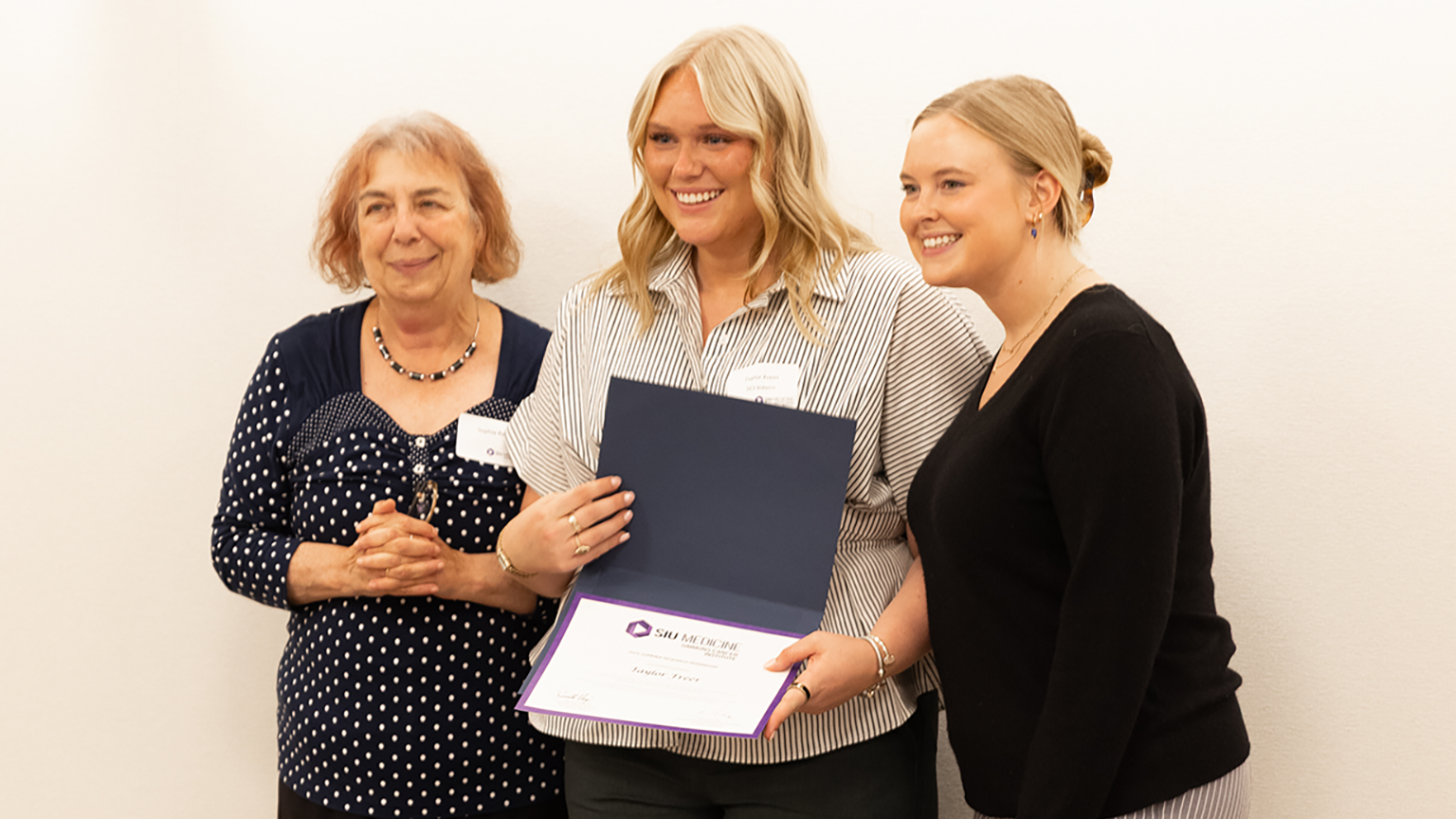 Taylor Freer of Alton, who is attending Baylor University, worked with Dr. Sophia Ran, PhD, to study tumor blood vessels in breast cancer. Ran is a MMICB professor. Freer’s research examined how blocking a specific protein—VEGFR-3— affected the development of new blood vessels, which tumors use to grow and spread.
Taylor Freer of Alton, who is attending Baylor University, worked with Dr. Sophia Ran, PhD, to study tumor blood vessels in breast cancer. Ran is a MMICB professor. Freer’s research examined how blocking a specific protein—VEGFR-3— affected the development of new blood vessels, which tumors use to grow and spread.
Through detailed microscopy and statistical analysis, Taylor found that one antibody significantly reduced the number of mature vessels in tumor tissue. While not all the results reached statistical significance, her findings may help explain why some broad-spectrum anti-angiogenic drugs have failed in the past, and point the way toward more targeted therapies.
“One in eight women will be diagnosed with breast cancer,” Taylor said. “Understanding how tumors spread could help us prevent that next step.”
Tackling drug resistance in breast cancer
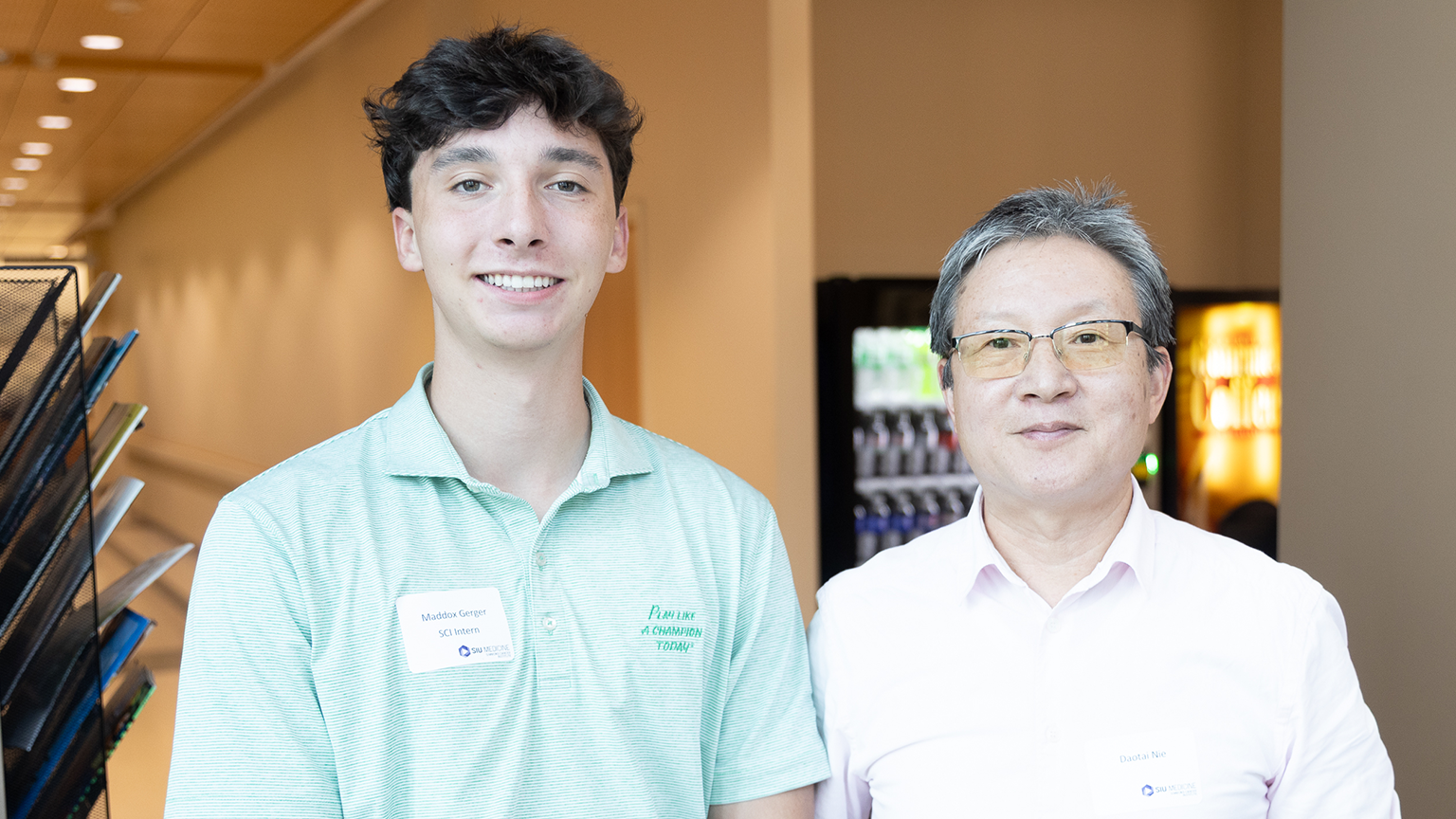 Maddox Gerger from Chatham, studying at the University of Notre Dame, focused on hormone therapy resistance in estrogen receptor-positive breast cancer. His research, under Daotai Nie, PhD, MMICB, examined how targeting the sigma-2 receptor — a lesser-known protein — might alter cell behavior and help overcome resistance to tamoxifen, a common treatment.
Maddox Gerger from Chatham, studying at the University of Notre Dame, focused on hormone therapy resistance in estrogen receptor-positive breast cancer. His research, under Daotai Nie, PhD, MMICB, examined how targeting the sigma-2 receptor — a lesser-known protein — might alter cell behavior and help overcome resistance to tamoxifen, a common treatment.
Using a combination of cell culture, gene expression analysis and colony assays, Maddox showed that certain drugs may reduce cancer cell growth — including those that have acquired resistance to tamoxifen.
“It's early work, but we’re seeing some additive effects,” Maddox said. “It’s exciting to think this could eventually support patients who’ve run out of options.”
Untangling immune signals in the tumor environment
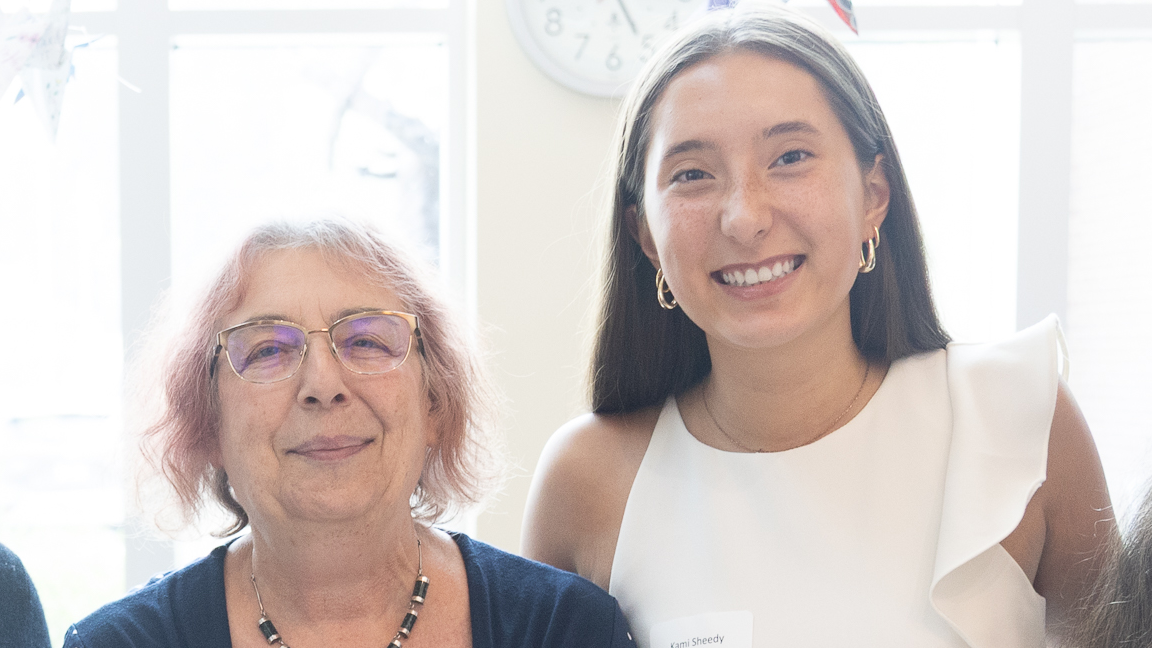 Also working with Ran, Kami Sheedy, from New Berlin, attending the University of Missouri, investigated how mesenchymal stem cells, recruited by tumors, might contribute to cancer spread. Her project focused on two proteins involved in immune regulation and cell fusion, and how they respond to inflammatory signals.
Also working with Ran, Kami Sheedy, from New Berlin, attending the University of Missouri, investigated how mesenchymal stem cells, recruited by tumors, might contribute to cancer spread. Her project focused on two proteins involved in immune regulation and cell fusion, and how they respond to inflammatory signals.
Using flow cytometry, Kami measured changes in protein expression after treating the cells with molecules that simulate infection and immune activity. Her work suggests these signals may prime the cells for behaviors that aid tumor growth.
“This was a little disappointing at first,” she admitted with a smile, “but then we saw something novel — a potential synergistic effect. That was really exciting.”
Shedding light on childhood muscle cancer
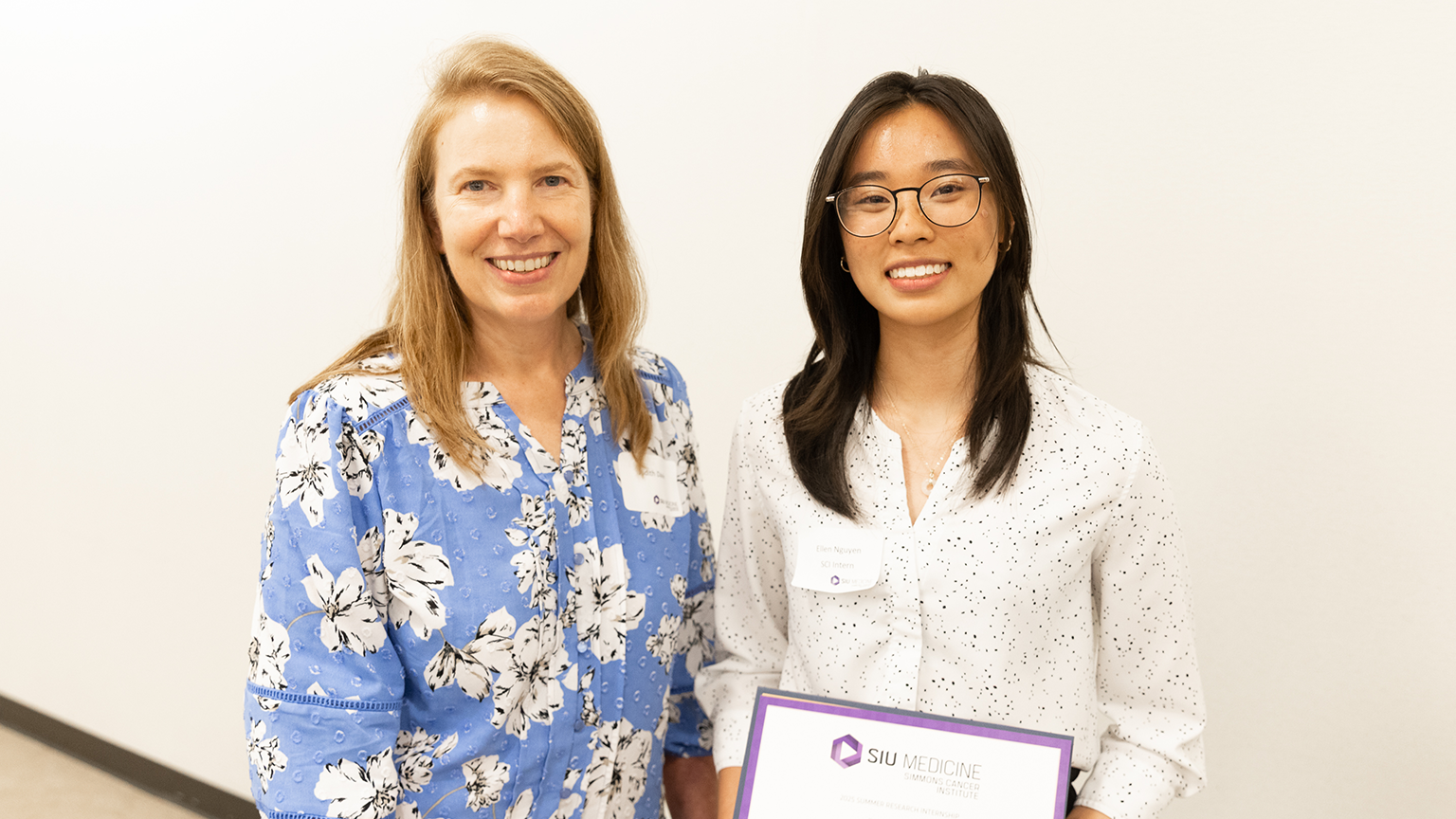 Ellen Nguyen from Saint Louis University and a Carbondale native, worked with Judy Davie, PhD, chair of the Department of Biomedical Sciences in Carbondale, to investigate rhabdomyosarcoma, a rare but aggressive cancer that affects children’s muscles. Her project confirmed that the gene Pax3 directly activates TBX2, a key driver of tumor growth in this cancer type.
Ellen Nguyen from Saint Louis University and a Carbondale native, worked with Judy Davie, PhD, chair of the Department of Biomedical Sciences in Carbondale, to investigate rhabdomyosarcoma, a rare but aggressive cancer that affects children’s muscles. Her project confirmed that the gene Pax3 directly activates TBX2, a key driver of tumor growth in this cancer type.
Using a combination of genetic knockdowns, protein analysis and gene expression assays, Ellen showed that suppressing Pax3 led to reduced tumor-promoting signals and increased activity of tumor suppressor genes.
“This result opens the door to new experiments,” she said. “There’s more to uncover.”
A shared purpose
“Donors, I hope you feel proud tonight,” said Khan. “This is your investment at work. These students are shaping the future of care right here in Illinois.”
For the interns, the summer was more than lab work. It was a chance to take part in something larger — to work toward solutions that may one day help their neighbors, their communities, and perhaps even themselves.
“The science was amazing,” one student said. “But more than anything, I learned that research gives people hope.”
Simmons Cancer Institute Summer Internship Program will return in 2026, continuing its mission to train young, local minds, support meaningful research and bring advanced cancer care closer to home.

